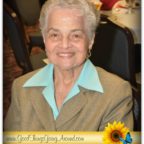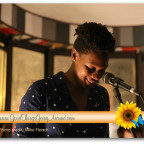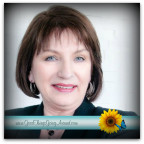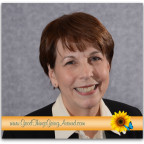CINspirational People
Carol Sanger Has A Heart For Pets
Carol Sanger has been a lifelong champion for non-human (and human) animals. Her compassion has saved and enriched the lives of hundreds – if not thousands – of dogs and cats; and causes she has supported have been a lifeline for vulnerable people who cannot afford the necessary expenses of medical pet care.
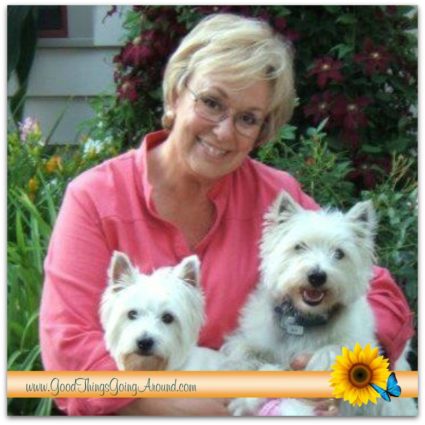 For all that she does and all that she stands for, the Cincinnati SPCA is honoring Carol with this year’s P.B. Johnston Humane Care Award that will be presented at its 2016 Fur Ball Gala.
For all that she does and all that she stands for, the Cincinnati SPCA is honoring Carol with this year’s P.B. Johnston Humane Care Award that will be presented at its 2016 Fur Ball Gala.
Even during her long career as vice president of external affairs for Federated Department Stores (now Macy’s), she focused the company’s philanthropy on animal welfare issues. However, it was upon her retirement in 2005 that she was able to devote so much energy toward volunteer efforts.
I got to know Carol when I was contracted to do public relations for United Coalition for Animals (UCAN). For five years Carol served as its board president and led its $400,000 fundraising campaign to build the region’s first low-cost spay/neuter clinic. Later she helped establish (and served as its board chair for two years) the nonprofit Pets in Need of Greater Cincinnati, a nonprofit veterinarian wellness clinic for pet caregivers with financial challenges. Now she is board chair for the League for Animal Welfare, and excited about that rescue group’s recent growth. The League just opened a mobile vet clinic that travels to rural communities where 90% of residents are supported with government assistance.
Of course, when you talk about Carol’s volunteer work, you have to include her work with Westie (West Highland Terrier) rescues. She and another woman, Sue Durkin, took over the rescue arm of the Westie Club of Indiana in 2002, developing it into a nonprofit, Westie Rescue Indiana, that serves three states and has cumulatively placed over 600 dogs since then. (They are in the process of dissolving it and merging it into Great Lakes Westie Rescue.)
Lisa: How did you love for Westies evolve?
Carol: We got our first Westie actually by accident in 1988. I went to a pet store with my brother Kenny to get booties for one of our Shih tzu’s. The store didn’t have booties but they did have a little, adorable white dog marked down for a quick sale. While I was reading a book they gave me on West Highland Terriers, Kenny was holding her. She came home with us and we named her Kippy. We were hooked and went to a breeder to get a puppy that we named Ditto. We thought all Westies would be mellow like Kippy but Ditto was very different and very busy.
Lisa: Tell us about your first pet.
Carol: I was probably in the 4th grade when my first pet was a little black cat that my uncle, who was a builder, found in one of the houses he was building. There were actually three kittens but that little black one was my favorite. It was the runt of the litter and the others were picking on it. Animals bring out your maternal instinct. I always swore since then that I would always have a black cat. Later I had a black cat who was with me 13 years. And I have a black cat now.
Lisa: Why is this volunteer work so important to you?
Carol: Several reasons. Being able to rescue and to watch those animals who have suffered some trauma to learn to trust again is like watching a flower bloom. Slowly it opens and there is a beautiful creature that feels safe for the first time in its life.
Also, on the other side, pets are really like surrogate kids for so many people. What society needs to recognize is the importance of pets in people’s lives. Animals are so important for seniors and those who don’t have much other reason to get out of bed. Pets make these people feel loved and appreciated. Helping people keep their pets is not a luxury, it is essential. It is a huge emotional connection to life and living for many.
Lisa: What meaning have pets brought to your life?
Carol: Kenny and I currently have 12 dogs, nine cats, three goats and a miniature donkey. I can’t imagine life without them. They are part of our family.
Marian Spencer Honored
 This week, I got to meet a real hero.
This week, I got to meet a real hero.
At nearly 96 years of age, Marian Alexander Spencer is an endearing, down-to-earth leader who has championed human rights and equality through her lifetime. She has been honored time and again for her unrelenting commitment to positive change; and this week she was recognized twice – the Cincinnati Human Relations Commission (CHRC) and the office of Cincinnati Council member Wendell Young announced a downtown street named for her legacy; and the Assistance League of Greater Cincinnati presented her with its esteemed annual Aspire Cincinnati Award.
Marian stood behind the podium at the Aspire Cincinnati™ Award Luncheon, and told a filled room of her grandfather who was a freed slave. His advice to her, and her brothers and sister, was always to ‘get your education, vote, and find people who will move you forward.’ (The Award is given to a local community leader and philanthropist who has demonstrated a passion to inspire and aspire, and to giving back.)
She followed that advice, graduating Gallia Academy High in Gallipolis as co-valedictorian and a member of the National Honor Society. She moved to Cincinnati to attend the University of Cincinnati, earning her bachelor of arts degree and meeting her husband, Donald A. Spencer.
Marian is a woman who has the courage to look adversity in the face and say, we can do better and we will all be better when we are as one.  According to the Cincinnati Museum Center, one of her earliest, most visible civil rights activities was in 1952 when she chaired the NAACP Legal Action vs Coney Island so that her sons Donald Jr. and Edward Alexander could swim there. Marian then became a life member of the NAACP, serving on the Executive Board, as chairman of both the Legal Redress and Education committees. In 1981, she became the first female president of the Cincinnati branch.
According to the Cincinnati Museum Center, one of her earliest, most visible civil rights activities was in 1952 when she chaired the NAACP Legal Action vs Coney Island so that her sons Donald Jr. and Edward Alexander could swim there. Marian then became a life member of the NAACP, serving on the Executive Board, as chairman of both the Legal Redress and Education committees. In 1981, she became the first female president of the Cincinnati branch.
She also served as chairperson of the Community Steering Committee for Indigent Defense, as chairperson of the Ohio Civil Rights Commission, and as president of both Woman’s City Club and Links, Inc. In addition, she was a member of the University of Cincinnati’s Board of Trustees. In 1983, Marian was elected to Cincinnati City Council as a Charterite and served for one term.
Sitting at her side, holding her hand and being warmed by her smile; I felt as if I had known Marian my entire life. Her sweet, tenderness reminds me so much of my late grandmother, who traveled as a young girl on a crowded boat from Russia to find hope in America and who died at 101.
Marian’s strength of character and tenacity to create a world where we can all be stronger and happier together is what makes her a hero. I am so glad for the opportunity to have gotten to know her, and for her legacy she has bestowed on our Greater Cincinnati region and beyond.
About the Assistance League:
The Assistance League of Greater Cincinnati is a nonprofit, all-volunteer organization dedicated to meeting critical needs of children and adults by identifying, developing, implementing and funding ongoing community programs. If you would like more information including membership, please visit their website.
Please click here to see my full photo album from the event on my Good Things Going Around Facebook page.
#GoodThingsCincy
Elese Daniel Is Superstar Writer
If you have ever reached out to Cincinnati Vice Mayor David Mann, you more than likely have come in contact with Elese Daniel. As his community liaison and office aide, she is his bridge to Cincinnati residents – answering calls and emails, scheduling community council meetings (there are 50 councils in Cincinnati), managing his calendar, and even updating his Facebook page.
 “This is the coolest way to learn about the city,” she told me.
“This is the coolest way to learn about the city,” she told me.
Her path to City Hall began in South Bend, Indiana, where she remembers her love for writing evolving since the third grade. That was when a story she wrote (and illustrated) placed in a scholastic book challenge, giving her the opportunity to read her it out loud before a gymnasium filled with people. Standing in front of a microphone to words you molded into creative expression was a REALLY big deal for a little girl. Since then, Elese said, “I thought of myself as a superstar writer.”
But, for awhile anyway, that superstar was more known for her skills on the basketball court than on paper. After all, her older brother played the sport and he was super cool. She wanted to be just as cool so she would follow him to the pa rks. She played in amateur leagues, in elementary, middle and high school; and ultimately landed a full scholarship to the University of Cincinnati where she studied journalism.
rks. She played in amateur leagues, in elementary, middle and high school; and ultimately landed a full scholarship to the University of Cincinnati where she studied journalism.
Ironically it was basketball that afforded her the ability to go to college, and it was a career ending ACL tear that gave her reason to refocus on her original love. She especially enjoyed writing about stories of other people and soon found herself doing assignments for online publications such as Soapbox Media.
Last year, through her volunteer involvement with Chase Public, a collaborative space for art and gatherings, she became a major contributor to the city-wide initiative of ArtWorks called ‘Ink Your Love.’ She also won third place in a poetry contest of the Cincinnati Symphony Orchestra about the meaning of freedom. This is her poem.
These days people have forgotten about her basketball history and she doesn’t even enjoy most sports much any more; but she is a big fan of bicycles. She rides her bike to work most days, likes bike polo, and hangs out with other bike fans.
Elese credits her U.C. professors and administrators for much of her career success. And it was Journalism Director of Undergraduate Studies, Jenny Wohlfarth, who helped Elese get her job at City Hall.
What is Elese’s advice to others on pursuing life? “Just do it,” she said.
You can read more about Elese in this U.C. article.
#GoodThingsCincy
Carolyn Dickerson Focuses On Strengths
Carolyn Dickerson and I first through a volunteer leadership role I had with the American Marketing Association a few years ago.
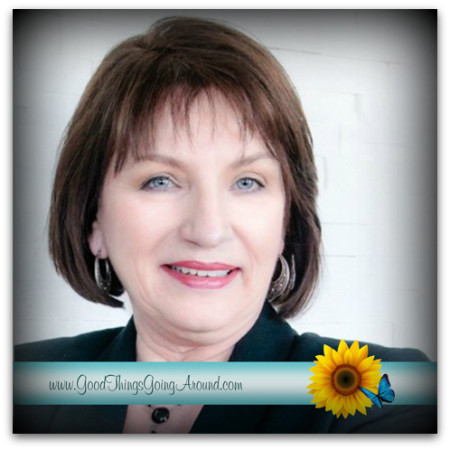 Little did I know at the time how her presence in my life would impact me personally and professionally. We quickly became friends. If your life has been lucky enough to have crossed paths with hers, you more than likely have grown as a result also.
Little did I know at the time how her presence in my life would impact me personally and professionally. We quickly became friends. If your life has been lucky enough to have crossed paths with hers, you more than likely have grown as a result also.
Carolyn is brilliant when it comes to business leadership and marketing. Always studying to remain up-to-date on technology advances, she has successfully managed projects ranging from $100K to $2.5M; and conducted presentations and trainings in sales and social media; and consulted with many organizations to help them to be more productive and successful.
What really sets Carolyn apart is her rare and genuinely caring nature, and how she flawlessly knows how to bring out the best in those around her. Carolyn so naturally motivates people by focusing on their strengths. She goes out of her way to help others find their inner spark, when sometimes they can’t find it themselves. And she is always looking for opportunities to give back.
If ever I find myself having self-doubts, I can count on her to tell me to ‘quit it’ as she will go on to remind me of my accomplishments and my abilities.
Carolyn is one of five children born in rural Kentucky. “When you grow up in a very poor family, your parents give you what they can. Mine didn’t have money to give, but they gave me my values,” she said.
“I have known my purpose since I was a small child. I was raised to serve thanks to my mother,” Carolyn went on to tell me. Her mother was a petite woman, with a frame no taller than 4 feet 9 inches. But Carolyn’s mother had immeasurable wisdom. “She was an aide at St. Elizabeth Hospital working in the psychiatric ward before the medical profession understood what Alzheimer’s and dementia were. One day she came home and I saw a large bruise on her back as she took off her uniform. When I asked what happened, she said someone was upset and threw her up against a wall before some could pull him off of her. When I asked why she did what she did for a living, she told me, ‘Honey, someone has to care!’
“This is why I am who I am and my younger sister is a nurse, my nephew is a certified nursing assistance and the family legacy goes on! Her legacy is that she taught that caring is important.
My dad always taught us to dream big because he wanted a better life for us than he had. He always encouraged us to get an education. He told us, ‘To Show THEM what you are made of! You can do anything if you want to do it bad enough. Dream big!'”
What Carolyn’s parents gave her is something far more valuable than money. Carolyn is someone I admire so much in the way she leads and manages. She demonstrates every day that organizations, teams, and people are the most successful when they encouraged to see the big picture and the finer points of their strengths. But also I admire Carolyn as a human being who models integrity and compassion.
And I am glad to be able to call her my friend!
Linda Neenan Inspires Exploration
I can remember so many years ago, first meeting with Linda Neenan in an office of her home talking about a small nonprofit organization called iSPACE of which she was its volunteer director and its driving impetus to open young minds.
I was initially brought on board to help her and her small group of dedicated volunteers in announcing plans for the region’s very first (and ONLY) space & 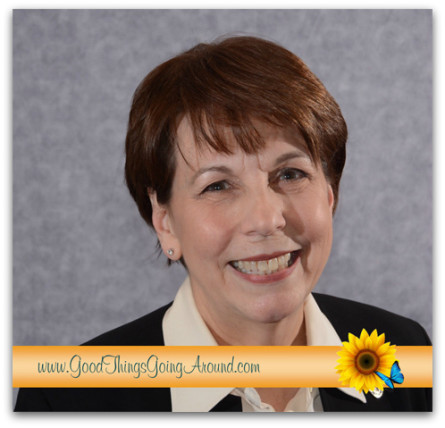 aeronautical learning center, and the region’s most unique solution to fostering an interest among young students in learning science, math and technology.
aeronautical learning center, and the region’s most unique solution to fostering an interest among young students in learning science, math and technology.
And have assisted them in promoting several of its Space Day, interactive learning events.
She used to have a sign hanging on one of her walls that read, “Serving 7000 people a year. Imagine what it would be like if we had a real space.” Years later, Linda now answers her phone from her office space in iSPACE’s 15,000 sq ft of fun-to-the-max learning as its salaried executive director leading a team of staff, volunteers, community leaders and educators. And that small organization that began in a den, now serves nearly 26,000 kids and over 5,000 adults annually, outgrowing its current space.
If you are unfamiliar, iSPACE programs are aligned with national and state educational standards and are designed to fill the region’s future workforce in manufacturing, technology, research, health care and other STEM-related fields. Its participants explore robotics, rocketry and more; engaging in active, hands-on problem solving and team-based projects using space as its theme.
Where it all began
Linda told me the story of how her parents, immigrants from Italy, never had the opportunity of college that she had. Her dad was a factory worker for General Motors in Detroit when he saw upon a flyer about a scholarship opportunity and brought it home to his daughter. What happened next has been permanently imprinted on Linda’s memory.
Bringing that flyer to her school, Linda’s counselor threw it on the desk, looked at her student in disgust and said, “but this is an engineering school.”
That incident, Linda told me, is why she ended up becoming a math teacher instead of an engineer. And, in the back of her mind, she thought, “Someday I will do 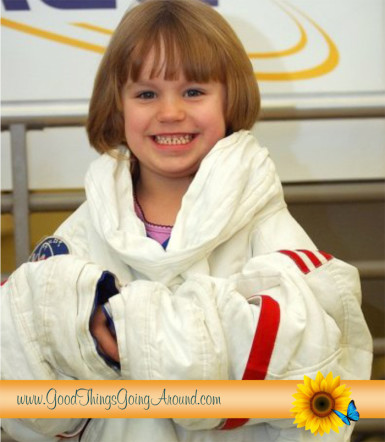 something so that kids won’t have obstacles thrown into their face like I had when they want to pursue a dream.”
something so that kids won’t have obstacles thrown into their face like I had when they want to pursue a dream.”
When iSPACE was founded in 2001, one of its core values was to provide access to all. “We make sure that in everything we do, it is available to all students. If a student has a physical disability, we make accommodations. We provide lots of support for young women and underserved students to encourage them. We have a partnership with juvenile court to include troubled youth,” Linda said. “It was all spurred on by my own experience early on when I was told I cannot do this.”
I asked Linda a few more questions.
Lisa: Tell us about someone in your life who has influenced you.
Linda: My biology teacher, Mr. Boxer, in high school was the first person who showed me that science could be fun and exciting. I used to look forward to his lectures. His passion for the subject was infectious. Today, when I am hiring educators, I look for them to have that same kind of passion as Mr. Boxer. The kids feed off of them just like I did back then.
Lisa: Do you remember your first job?
Linda: I do. When I was 15, I worked in a flower shop. Through high school, I worked in three different ones actually and then I had my own flower shop in college. I got a lot of business from the sororities and fraternities. I always had the prettiest corsage because I made it myself.
Lisa: What is something that people may be surprised to learn about you?
Linda: When people meet me, I am very outgoing. They may not realize that I do not have a lot of confidence. I am always so surprised and not expecting it when something good happens. When I got a call about the Enquirer’s Women of the Year Awards, I assumed it was about a nomination letter. The other night I gave a pitch for a grant in a competition with other nonprofits who had heartfelt missions. I was not expecting to win, but we did. It is all very validating for me.



